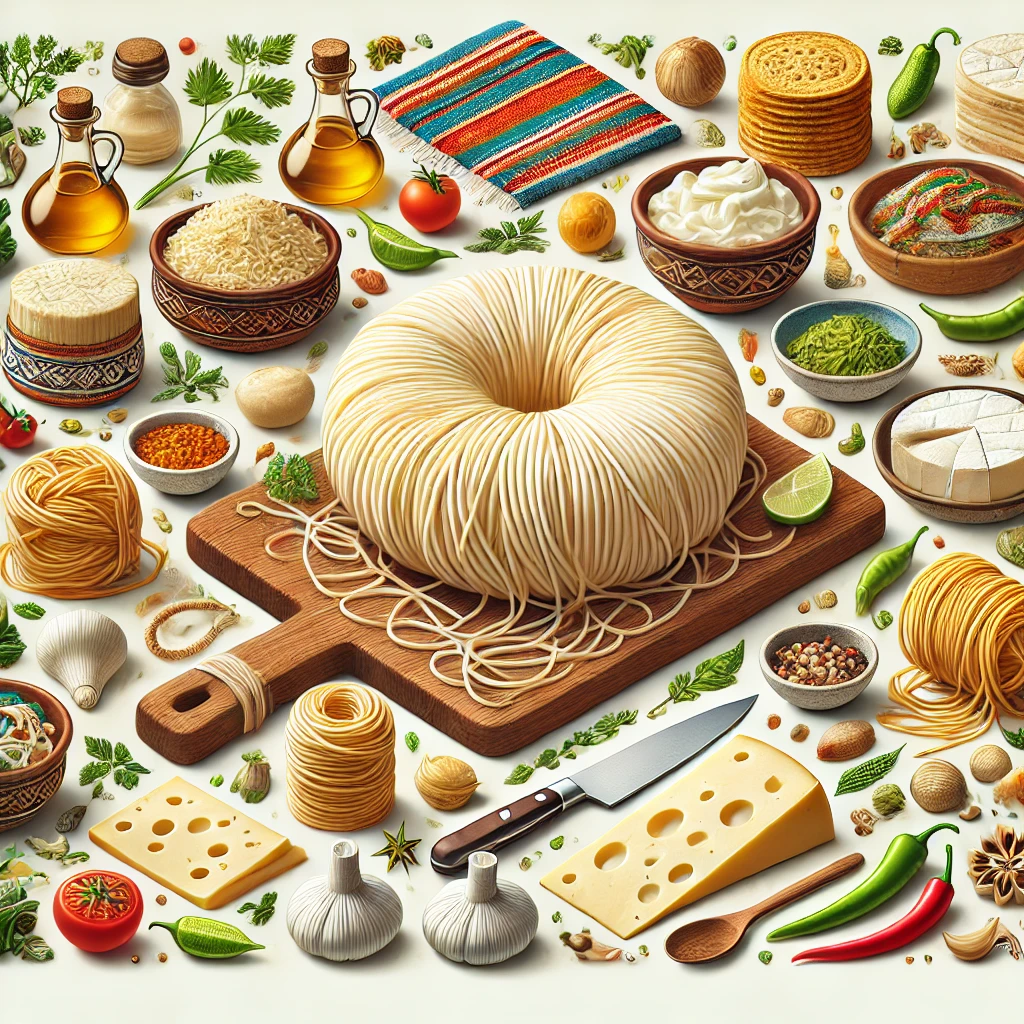Costa Rica is best known for its biodiversity, coffee, and warm hospitality, but its traditional cheeses are an equally important part of the country’s culinary identity. Among them, Queso Palmito stands out as a fresh, handcrafted cheese celebrated for its delicate flavor, stringy texture, and artisanal preparation. Often compared visually to mozzarella, Queso Palmito is distinctly Costa Rican in taste, technique, and cultural significance.
This complete guide explores Queso Palmito’s origin, taste, production process, properties, uses, and nutritional value, offering an authentic look at one of Costa Rica’s most cherished cheeses.
What Is Queso Palmito?
Queso Palmito is a fresh cow’s milk cheese traditionally produced in the central and northern regions of Costa Rica, especially in rural dairy-farming communities. The name palmito refers to its rolled, spiral appearance, which resembles the heart of palm when sliced.
Key defining traits include:
-
Fresh, unaged cheese
-
Hand-stretched and rolled structure
-
Mild, milky flavor
-
Soft yet elastic texture
Unlike aged cheeses, Queso Palmito is meant to be enjoyed soon after production, highlighting freshness above complexity.
Cultural Importance in Costa Rica
Queso Palmito is deeply rooted in Costa Rican daily life, particularly in countryside households where small-scale dairy production is common. Cheesemaking knowledge is often passed down through families, preserving traditional methods.
The cheese is commonly:
-
Served at breakfast or lunch
-
Sold in local markets and roadside stands
-
Paired with tortillas, bread, or fresh fruit
-
Shared during family gatherings
Rather than being a luxury product, Queso Palmito represents simplicity, tradition, and local pride.
Taste Profile of Queso Palmito
Flavor Characteristics
Queso Palmito has a clean, fresh, and gently milky flavor that appeals to a wide range of palates. It is intentionally mild, allowing the natural sweetness of cow’s milk to shine.
Typical flavor notes include:
-
Fresh cream
-
Light saltiness
-
Subtle dairy sweetness
Its mildness makes it especially popular among children and those who prefer non-sharp cheeses.
Texture and Mouthfeel
One of Queso Palmito’s most distinctive features is its stringy, layered texture. When pulled apart, it separates into thin strands or ribbons.
Texture traits include:
-
Soft and elastic
-
Moist but not watery
-
Smooth and pliable
This texture is achieved through a stretching process similar to pasta filata cheeses, though the final result remains uniquely Costa Rican.
How Queso Palmito Is Made
Milk Selection
Fresh cow’s milk is used, often sourced from local farms. The milk is typically lightly heated but not heavily processed to preserve its natural character.
Coagulation
Rennet is added to coagulate the milk, forming curds. Once set, the curds are cut to release whey.
Heating and Stretching
The curds are heated in hot water or whey until they become elastic. Cheesemakers then stretch and fold the curd by hand, developing the cheese’s signature layered structure.
Rolling and Shaping
The stretched curd is rolled into a tight spiral or ball, creating the iconic palmito shape. Light salting enhances flavor without overpowering freshness.
No Aging Process
Queso Palmito is not aged. It is typically consumed within days of production, which is essential to preserving its soft texture and mild taste.
Nutritional Properties of Queso Palmito
Queso Palmito is valued for its nutritional simplicity and natural ingredients.
Key Nutritional Benefits
-
High-quality protein
-
Good source of calcium and phosphorus
-
Provides vitamin A and B vitamins
-
Moderate fat content for energy and satiety
Because it is fresh and minimally processed, it fits well into balanced diets when eaten in moderation.
Digestibility and Health Considerations
Fresh cheeses like Queso Palmito are often easier to digest than aged cheeses. While it does contain lactose, levels are typically lower than in fresh milk.
Its short ingredient list—milk, rennet, salt—appeals to those seeking natural, minimally processed foods.
Traditional and Modern Uses
Traditional Costa Rican Uses
-
Served with warm tortillas
-
Eaten with gallo pinto (rice and beans)
-
Paired with fresh bread at breakfast
Modern Culinary Uses
-
Sliced into salads
-
Melted lightly over vegetables
-
Added to sandwiches or wraps
-
Paired with tropical fruits
Its mild flavor allows it to adapt easily across cuisines without overpowering other ingredients.
Best Pairings for Queso Palmito
Food Pairings
-
Fresh tomatoes and avocados
-
Mango, pineapple, or papaya
-
Corn tortillas and flatbreads
-
Lightly seasoned vegetables
Beverage Pairings
-
Fresh fruit juices
-
Coffee or café con leche
-
Light white wines
The goal is to complement, not dominate, the cheese’s gentle profile.
How Queso Palmito Compares to Mozzarella
Although visually similar, Queso Palmito differs from mozzarella in several ways:
-
Milder and less acidic
-
Firmer layered structure
-
Less moisture
-
Distinct rolling technique
These differences give Queso Palmito its own identity rather than making it a substitute cheese.
Availability and Market Presence
Queso Palmito is widely available in Costa Rican markets, dairies, and supermarkets, but it is rarely exported due to its freshness and short shelf life.
Internationally, it remains a hidden gem, known mostly to travelers and food enthusiasts.
Sustainability and Local Production
Small-scale production of Queso Palmito supports:
-
Local dairy farmers
-
Traditional food systems
-
Low-waste, fresh food consumption
Its minimal aging and processing reduce energy use, making it an environmentally friendly cheese option.
Why Queso Palmito Matters
Queso Palmito is more than a cheese—it reflects:
-
Costa Rica’s rural heritage
-
Family-based food traditions
-
The value of fresh, local ingredients
Preserving and sharing knowledge about such cheeses helps protect culinary diversity in a globalized food system.
Conclusion
Queso Palmito is a true expression of Costa Rican food culture. With its fresh flavor, stringy texture, and artisanal preparation, it offers a simple yet deeply satisfying cheese experience. Whether enjoyed at breakfast with tortillas or paired with tropical fruit, Queso Palmito celebrates freshness, tradition, and community.
For anyone exploring traditional Latin American cheeses, Queso Palmito deserves a place at the table.
Frequently Asked Questions (FAQ)
What does Queso Palmito taste like?
It has a mild, fresh, and slightly creamy flavor with light saltiness.
Is Queso Palmito the same as mozzarella?
No. While similar in appearance, Queso Palmito is milder, less acidic, and traditionally rolled rather than shaped into balls.
Is Queso Palmito aged?
No, it is a fresh cheese meant to be eaten shortly after production.
How is Queso Palmito commonly eaten?
It is often eaten with tortillas, bread, rice and beans, or fresh fruit.
Can Queso Palmito be melted?
Yes, it melts gently but is best enjoyed fresh rather than fully melted.






